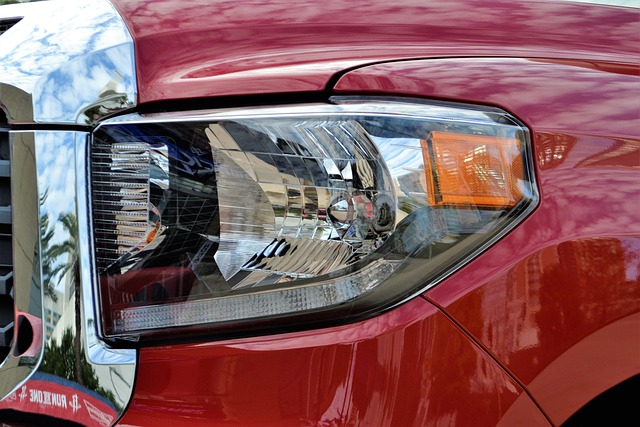Receiver hitches are essential for fleet truck repairs in Brownsville, Tx, enabling secure towing and hauling. Choosing the right hitch (e.g., gooseneck or class III) based on vehicle weight, needs, and cargo type is vital. Installation involves mounting, securing with hardware, and testing, as detailed in a fleet Truck repair manual Brownsville Tx. Regular maintenance, including corrosion protection, damage checks, lubrication, and cleaning, prevents issues common in Brownsville's climate and terrain.
“Enhance your trucking efficiency with a comprehensive guide to receiver hitches, an essential accessory for fleet vehicles. This article serves as both a learning tool and a practical manual, offering insights into the fundamentals of receiver hitches and their installation. We’ll walk you through choosing the ideal hitch for your fleet vehicles and provide a detailed step-by-step installation process based on a truck repair manual. Additionally, discover common issues and maintenance tips tailored to Brownsville, Tx, ensuring optimal performance for your trucks.”
- Understanding Receiver Hitches: A Basic Guide
- Choosing the Right Hitch for Your Fleet Vehicles
- Step-by-Step Installation: A Truck Repair Manual
- Common Issues and Maintenance Tips for Brownsville Tx
Understanding Receiver Hitches: A Basic Guide

Receiver hitches are a fundamental component in the world of truck repairs, especially for those managing fleets. These hitches play a crucial role in enabling secure towing and hauling capabilities for various vehicles, making them an essential part of any fleet Truck repair manual. By understanding how receiver hitches function, mechanics and fleet owners can ensure optimal performance and safety when it comes to attaching trailers or cargo carriers to their trucks.
In simple terms, a receiver hitch is a metal device installed in the bed of a pickup truck or similar vehicle. It consists of a tube-like structure with a built-in pin and hook system, allowing for easy connection to a trailer’s ball coupler. This design facilitates seamless attachment and detachment, providing a secure and stable connection during transportation. For fleet operators in Brownsville, Tx, having a comprehensive understanding of receiver hitches is vital, as it enables them to perform efficient repairs and maintain their vehicles’ towing capabilities, keeping their operations running smoothly.
Choosing the Right Hitch for Your Fleet Vehicles

When it comes to selecting the ideal hitch for your fleet vehicles, especially in a region like Brownsville, TX, where reliable truck repair services are essential, understanding your specific needs is paramount. The right hitch ensures seamless towing and hauling capabilities, catering to the diverse requirements of various industries. For instance, a gooseneck hitch might be suitable for heavy-duty trucks used in construction, offering greater stability and weight capacity.
For smaller fleet vehicles or those engaged in light-duty transportation, a more versatile option like a class III hitch could be ideal. It’s crucial to consider factors such as vehicle weight, towing needs, and the type of cargo you frequently transport when making this decision. A comprehensive fleet truck repair manual for Brownsville residents can guide them through these choices, ensuring they invest in hitches that align with their operations’ unique demands.
Step-by-Step Installation: A Truck Repair Manual

Installing a receiver hitch is a common task for truck owners, especially those in the fleet industry who frequently need to tow or attach trailers. For a step-by-step guide, refer to a detailed fleet truck repair manual. The process begins by locating the ideal mounting location on your truck bed, ensuring it aligns with your trailer’s hitch point. Next, drill pilot holes and securely fasten the hitch mount using provided hardware. Once the mount is secure, attach the receiver hitch, aligning it precisely with the mount.
A fleet truck repair manual from Brownsville, TX, will offer precise instructions for this procedure, ensuring a safe and secure installation. After attachment, verify the hitch’s stability by applying gentle force and checking all bolts and connections. With these steps, your truck is now ready to tow or haul with confidence, making fleet operations more efficient.
Common Issues and Maintenance Tips for Brownsville Tx

Brownsville, TX, residents and businesses relying on their trucks for daily operations often face unique challenges due to the area’s climate and terrain. This can lead to common issues with receiver hitches, a vital component for towing and hauling. Regular maintenance is key to preventing these problems, especially when it comes to fleet truck repair in Brownsville Tx.
A well-maintained hitch ensures proper attachment and stability during towing, preventing costly damages and safety hazards. For instance, corrosion from high humidity levels can weaken the hitch’s structure over time. Using waterproof coatings and regularly inspecting for signs of wear or damage is essential. Additionally, ensuring the pin and latch mechanism operates smoothly without any loose parts can prevent unexpected failures while on the road. Regular cleaning and lubrication are simple yet effective steps to keep this critical system running smoothly, as outlined in a fleet truck repair manual for Brownsville Tx.
In conclusion, receiver hitches are essential accessories for fleet truck owners in Brownsville, TX, offering a simple yet effective solution for towing and hauling. By understanding the basics, choosing the right hitch for your vehicles, and following a comprehensive truck repair manual, you can ensure optimal performance and maintain your fleet efficiently. Regular maintenance, addressing common issues promptly, will keep your trucks on the road, maximising productivity and minimising downtime in this dynamic city.
